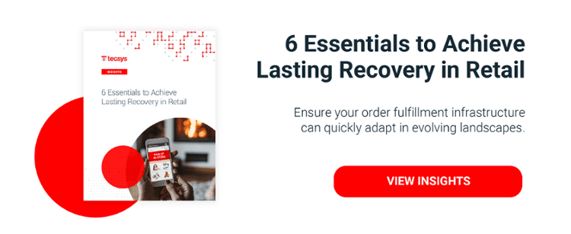Shrewd Retailers Think Outside the Big Box

Please enjoy this republication of a RETHINK Retail article.
In his opening keynote for NRF’s Big Show 2020, Microsoft CEO Satya Nadella casually dropped some staggering stats:
- 31% of the world’s GDP can be attributed to retail.
- 15% of all retail sales today are made online.
- 75% of all shopping begins online.
What does this tell us? Well, retail is big business—but we already know this. Another known known is that consumers are continuing to shift online at a moderate scale. No surprises. The more intriguing story developing is the relationship between these numbers. At the top of the retail sales funnel, 75% of all shopping is taking place online. At the tail end of the funnel, only 15% translates into online sales. This is a dramatic webrooming-to-in-store drop-off. What does that mean for single-channel brick-and-mortar retailers lacking that online shopping touchpoint? What does it mean for digitally-native brands that are missing out on 85% of retail transactions?
The answer is simple: Brick-and-mortar stores are not dead; rather their role in the shopping experience has evolved. There is a growing symbiotic relationship between digital and physical commerce. Online and offline shopping is getting stitched together in the name of frictionless retail, with each channel serving a distinct role that cannot be replaced by one another.
Walmart gets it. The big-box store’s first-ever Super Bowl ad extolled the convenience of in-store pickup, a concept that is decades old, yet still a work in progress for traditional retailers. And while Walmart is playing catch-up, nimbler brands have long understood that not all consumers are the ‘browse and buy’ type. Consider the growth curves of relative retail newcomers like Lululemon and Uniqlo while household brands like RadioShack, Toys R Us and Payless shutter. It is not the biggest brands that will survive, but rather the savviest.
The store as a nonpareil in luxury and discount
Two juxtaposing retail segments—luxury and retail—reveal why physical stores are not going anywhere.
Luxury retail is premised on brand promise. A brand is the sum of all customer touchpoints across the digital and physical. The keystone of that differentiation, however, is the white-glove personal touch: fine products, upscale packaging, concierge-like in-store experiences. Some luxury retailers refuse to sell online altogether because it relies on an uncontrolled environment that risks devaluing or cheapening the brand. After all, where’s the luxury cachet if the brand’s products are accessible to the masses? While luxury brands maneuver that digital commerce enigma, it is clear that the role of the physical store is still very much in play; a Bain & Company report reveals that physical store purchases account for over 80% of the luxury goods market, and will still account for a 75% slice by 2025.
At least for the foreseeable future, the physical store is a stalwart in luxury goods. While digital commerce has a critical role, augmented/virtual reality can only go so far; the immersive in-store experience is still second to none.
At the other end of the spectrum is the discount market. Discount stores are thriving because impulse buys are rampant. The average basket size for discounts is high. Imagine shopping for a lot of small value items — something the online shopping experience simply isn’t optimized for. Whereas browsing fashion and apparel is native to the e-commerce space, scrolling through many individual product information pages for pipe cleaners or stickers (can you tell I have a 5-year-old daughter?) is simply not as fluid or efficient. It’s easier to hit the store and cruise the aisles where you can see and grab things that spark your fancy.
The store as a strategic fulfillment tool
Stores are becoming an important value-add for e-commerce shoppers. For example, Satya mentioned that 15% of e-commerce sales are being driven by buy on-line pickup in-store (BOPIS) fulfillment options. Forbes recently reported from NRF’s 2020 Big Retail Show that technology now exists for brick-and-mortar stores to use the physical store for e-commerce fulfillment, enabling BOPIS, ship-to-store and ship-from-store, among other distribution channels that give consumers more ways to shop.
The more sophisticated retailers have also learned that their supply, or ‘inventory available to sell’, should not be limited by channel in order to meet demand. Inventory in a warehouse or store can be combined and intelligently allocated to ensure retailers meet demand through whichever channel their customers purchase; Instagram to pop-up store, online store to flagship. Customers don’t care where product is sourced from, just as long as they get what they ordered, when they want it.
The store as a matter of convenience
The BOPIS fulfillment model enables consumers to have the best of both physical and digital worlds; they can research and select their product online, but experience it in-store for final validation. BOPIS is definitely becoming more mainstream and it is usually the first fulfillment strategy retailers ask about adding to their order management capabilities. In this vein, retailers with an established physical footprint have a distinct advantage over the single-channel digital native marketplace.
Ultimately, the store is consistently crucial to delivering on the convenience that customers expect, whether it is an in-store pickup or a behind-the-scenes fulfillment.
The store as a customer acquisition channel
Why have digitally-native brands like Bonobos, Allbirds, Casper, Mejuri and even Amazon opened physical stores? Simple. As Doug Stephens declared, stores are more about “the acquisition of customers.” These brands have all realized that the physical store turns consumers into customers. This trend is also why we see retailers investing in over-the-top flagship stores. If you travel to NYC or Paris you will see that investment in stores is healthier than ever, luring swaths of tourists that may not be familiar with their brand — tourists who can still access those stores once they go home.
Whether it’s a large physical flagship or event-driven pop-ups in high-traffic, non-classic hubs, and suddenly you have more potential customer acquisition targets than ever before.
So, who needs stores?
The stats show that today’s consumers still do enjoy the in-person experience of a brand. But the retail experience is changing, and how these two worlds interconnect is taking a new form. Retailers of all sizes are leveraging new strategies and technologies to adapt to new buying habits and deliver brand value through the shopping experience.
To purchase a product, retail’s digital channels require stores for fulfillment; retail’s creative and marketing rely on stores to bring in net new customers. Stores will continue to exist, but like the clownfish and anemone, stores and digital both need and benefit from each other in this online-offline symbiotic relationship.



